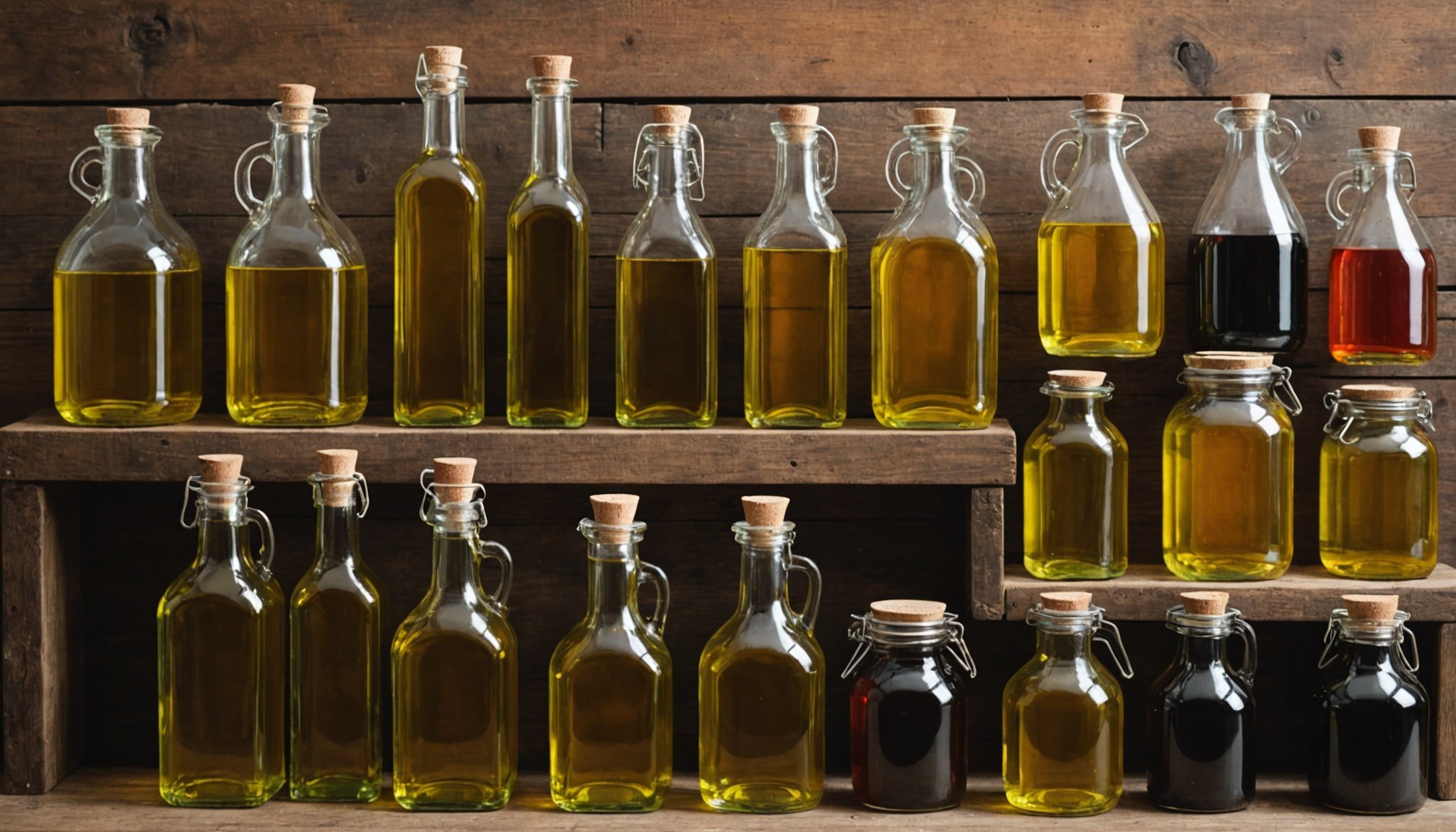Cooking oils are essential ingredients that enhance flavors, but improper storage can lead to rancidity and waste. Understanding how to keep your oils fresh is vital for both taste and health. This guide provides practical strategies and innovative techniques for optimal storage, ensuring you maximize the lifespan and quality of your cooking oils. Learn how to choose the right containers, control temperature, and avoid common pitfalls that compromise freshness. Your culinary creations deserve the best, and storing your oils correctly is the first step to achieving that.
Understanding Cooking Oil Freshness
Cooking oil freshness is crucial for maintaining culinary quality. Various factors influence how long your oil remains fresh. Exposure to light, heat, and air can accelerate oil spoilage. Oils stored in a cool, dark place typically have a longer shelf life. Regularly check the expiration date on the bottle, but remember, once opened, the clock ticks faster.
Additional reading : Maximize Your Kitchen Space: The Benefits of a Fold-Down Table for Healthy Meal Prep
Signs that cooking oil has gone bad include a change in color, off-putting smell, or a rancid taste. If your oil develops a sour or bitter flavor, it's time to discard it. Fresh oil should have a neutral aroma and a clear appearance.
The importance of oil shelf life cannot be overstated. Using fresh oil ensures the best flavor and texture in your dishes. Old oil can negatively impact the taste of your food and may even pose health risks.
Also to read : Choosing the Perfect Knife Sharpener for a High-Protein Diet Kitchen: A Comprehensive Guide
Here’s a quick checklist to help you assess oil freshness:
- Color: Should remain consistent with its original hue.
- Smell: Neutral, not sour or musty.
- Taste: Pleasant, not bitter or metallic.
By understanding these factors and regularly checking your oil, you can ensure your culinary creations are always at their best.
Ideal Storage Conditions for Cooking Oils
Storing cooking oils properly is essential to maintain their quality and flavor. Understanding the impact of temperature, light, and air exposure is key.
Importance of Temperature
Temperature plays a significant role in preserving oil freshness. Oils should be stored in a cool environment, ideally below 20°C (68°F). High temperatures can cause oils to deteriorate quickly, affecting their taste and nutritional value.
Best Practices for Temperature Settings:
- Store oils in a pantry or cupboard away from heat sources
- Avoid placing oils near stoves or ovens
- Consider refrigeration for delicate oils like flaxseed
Managing Light Exposure
Light exposure can degrade oils, altering their chemical composition. To protect your oils, store them in dark containers or cupboards.
Types of Light to Avoid:
- Direct sunlight
- Fluorescent lighting
- Halogen bulbs
Controlling Air Exposure
Air exposure leads to oxidation, which can spoil oils. Keep bottles tightly sealed to minimize contact with air.
How to Minimize Air Exposure:
- Use smaller containers to limit air space
- Transfer oil to airtight bottles
- Ensure caps are secure after each use
By following these guidelines, you can extend the shelf life of your cooking oils, ensuring they remain fresh and flavorful.
Choosing the Right Containers for Cooking Oils
Selecting the appropriate storage can significantly extend oil freshness.
Materials Suitable for Oil Storage
Choosing the right oil containers is crucial for preserving the quality of your cooking oils. Glass and stainless steel are highly recommended due to their non-reactive properties. These materials prevent chemical reactions that can spoil the oil. Avoid using plastic containers, as they may leach chemicals into the oil over time.
Importance of Airtight Containers
Airtight storage containers are essential to prevent oxidation. When oils are exposed to air, they can become rancid, affecting both taste and nutritional value. Ensure your containers have tight-fitting lids to keep air out. This simple step can make a significant difference in oil preservation.
Recommended Container Sizes
The size of your oil containers can also impact freshness. For oils used frequently, opt for smaller containers to limit air exposure each time you open them. Here's a quick guide:
- Olive Oil: 250ml to 500ml
- Sesame Oil: 200ml to 300ml
- Coconut Oil: 400ml to 600ml
By selecting the right materials and sizes for your storage containers, you can ensure your cooking oils remain fresh and flavorful, enhancing your culinary creations.
Techniques for Prolonging Oil Shelf Life
Exploring methods to enhance oil preservation for extended freshness.
Refrigeration vs. Room Temperature
Refrigeration can be an effective oil preservation technique for certain oils. For instance, oils like flaxseed and walnut benefit from cooler temperatures, which slow down oxidation. However, not all oils require refrigeration. Olive oil, for example, maintains its quality at room temperature if stored correctly. Always consider the specific type of oil when deciding between refrigeration and room temperature to effectively extend its shelf life.
Using Dark Glass Bottles
Dark glass bottles are excellent for extending oil life. They protect oils from light exposure, which can degrade quality. Using these bottles helps maintain the oil's flavor and nutritional value. Ensure the bottles are also airtight to prevent air exposure. This combination of dark glass and airtight sealing is a powerful strategy in oil quality maintenance.
Proper Pouring Techniques
Proper pouring techniques can significantly impact oil preservation techniques. Avoid exposing oils to air unnecessarily by pouring carefully and using smaller amounts. This reduces the risk of oxidation and helps in extending oil life. Consider using pour spouts or measuring caps to control the amount of oil used, further aiding in oil quality maintenance.
By implementing these methods, you ensure your oils remain fresh and flavorful for longer.
Additional Tips for Maintaining Oil Quality
Essential practices for optimal cooking oil care and management.
Tracking Oil Freshness
Effectively managing cooking oil care involves keeping track of its freshness. Utilize a simple labeling system to note the date each oil was opened. This practice helps in monitoring the time elapsed since opening, ensuring oils are used before they degrade. Regularly inspect oils for any signs of spoilage, such as changes in color or smell.
Recommended Oil Rotation Practices
Implementing oil rotation practices is a proactive approach to maintain oil quality. Rotate oils based on their freshness, using older oils first to prevent spoilage. This method ensures that no oil is left unused for too long, thereby maximizing their shelf life. Regular rotation also helps in managing your inventory effectively.
Best Practices for Oil Disposal
Proper oil management includes knowing how to dispose of expired oils responsibly. Avoid pouring oil down the drain, as it can cause plumbing issues. Instead, use these best practices:
- Collect used oil in a sealed container
- Dispose of it at designated recycling centers
- Consider repurposing for non-culinary uses, like lubricating tools
By following these oil quality tips, you ensure that your cooking oils remain fresh and effective, enhancing both the taste and safety of your culinary creations.











